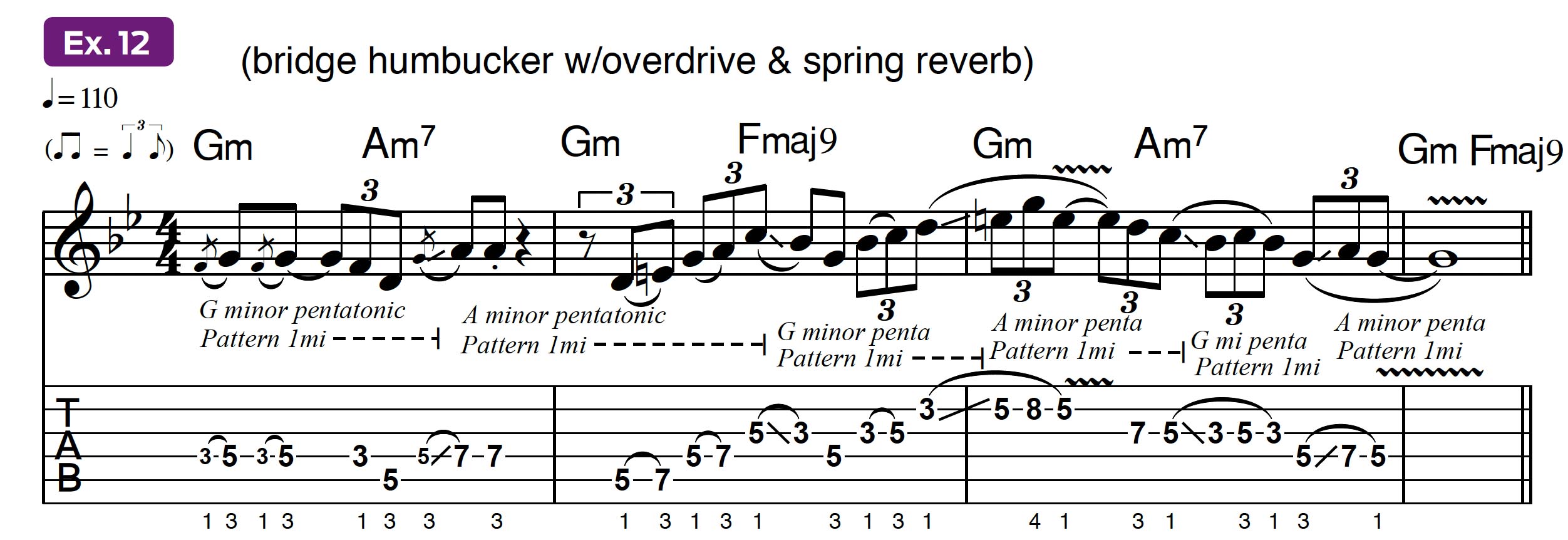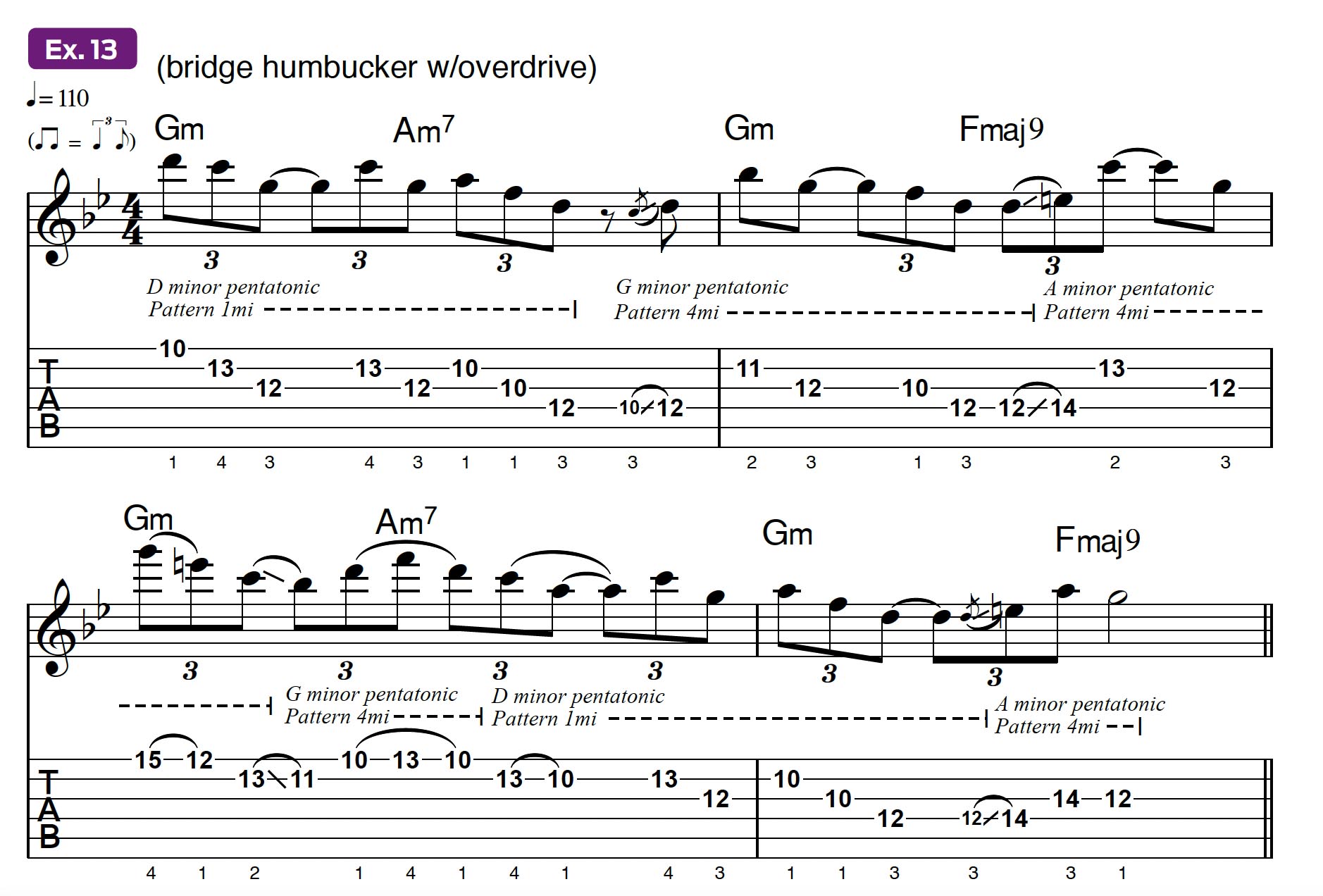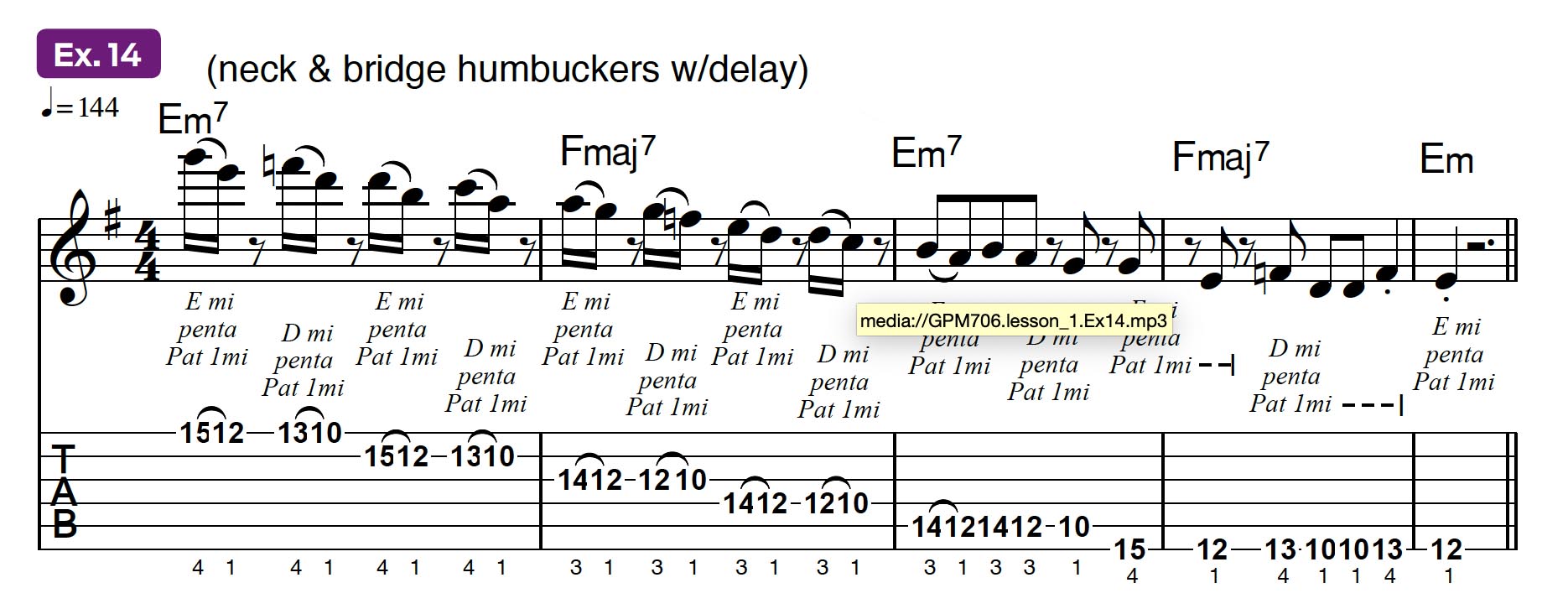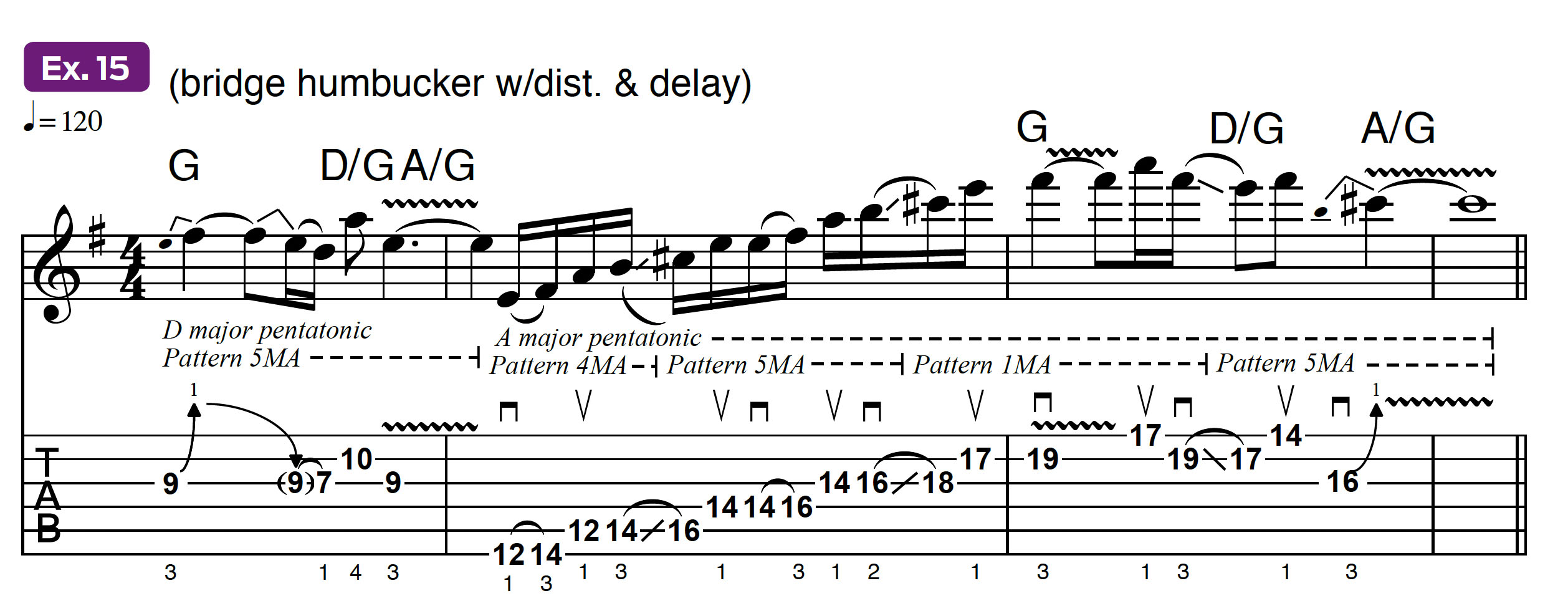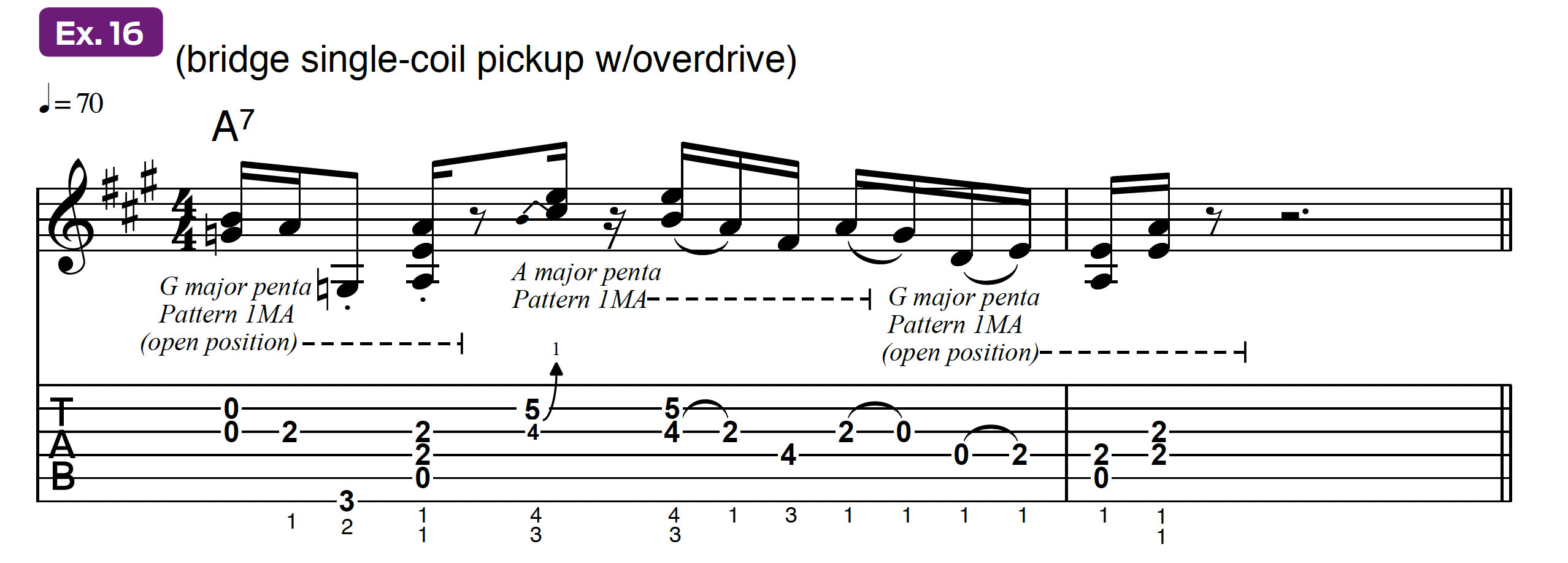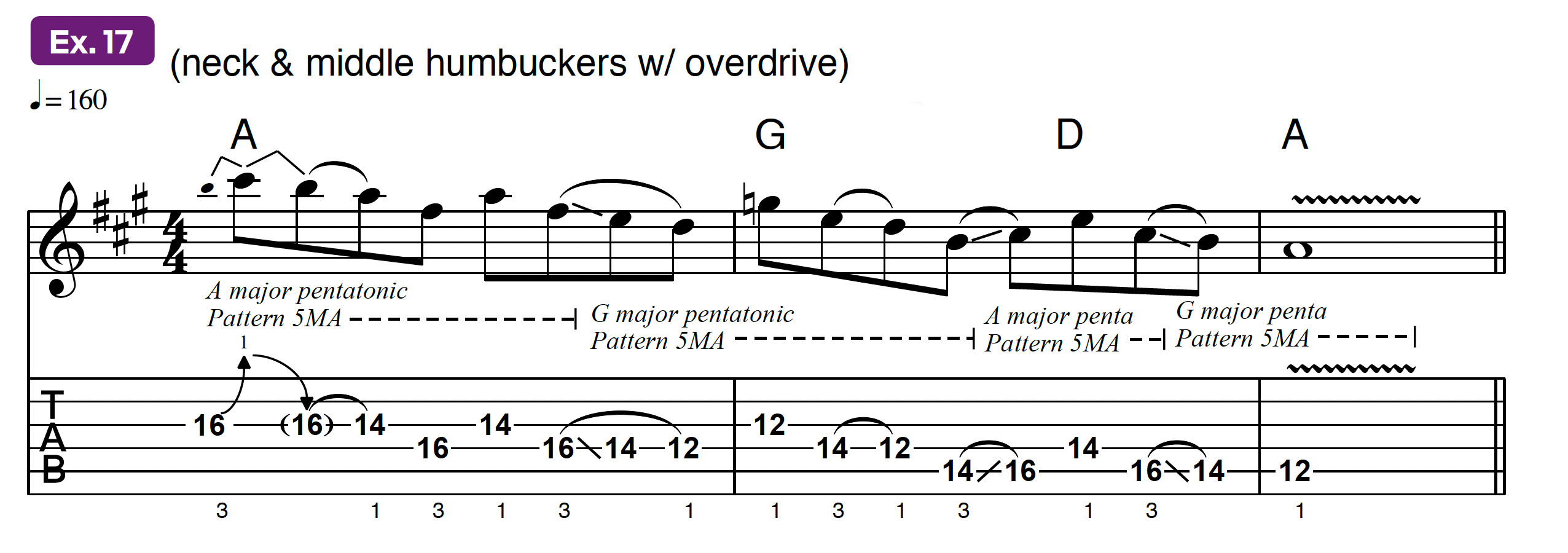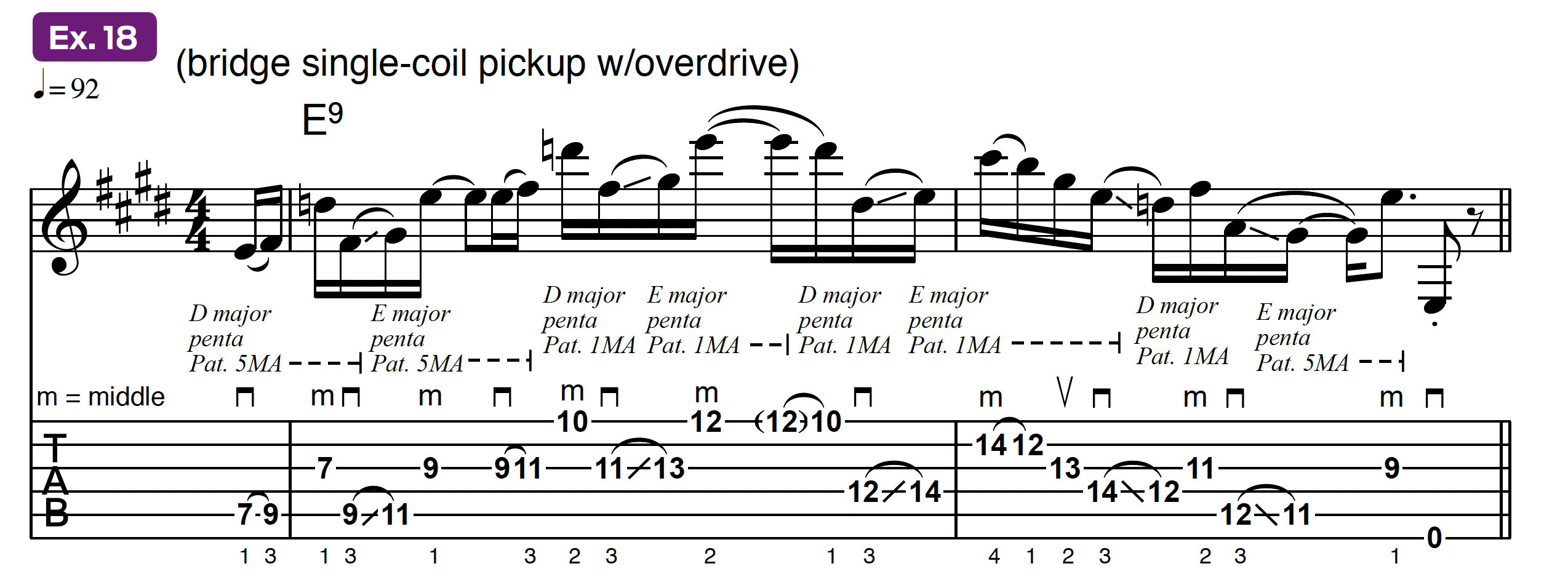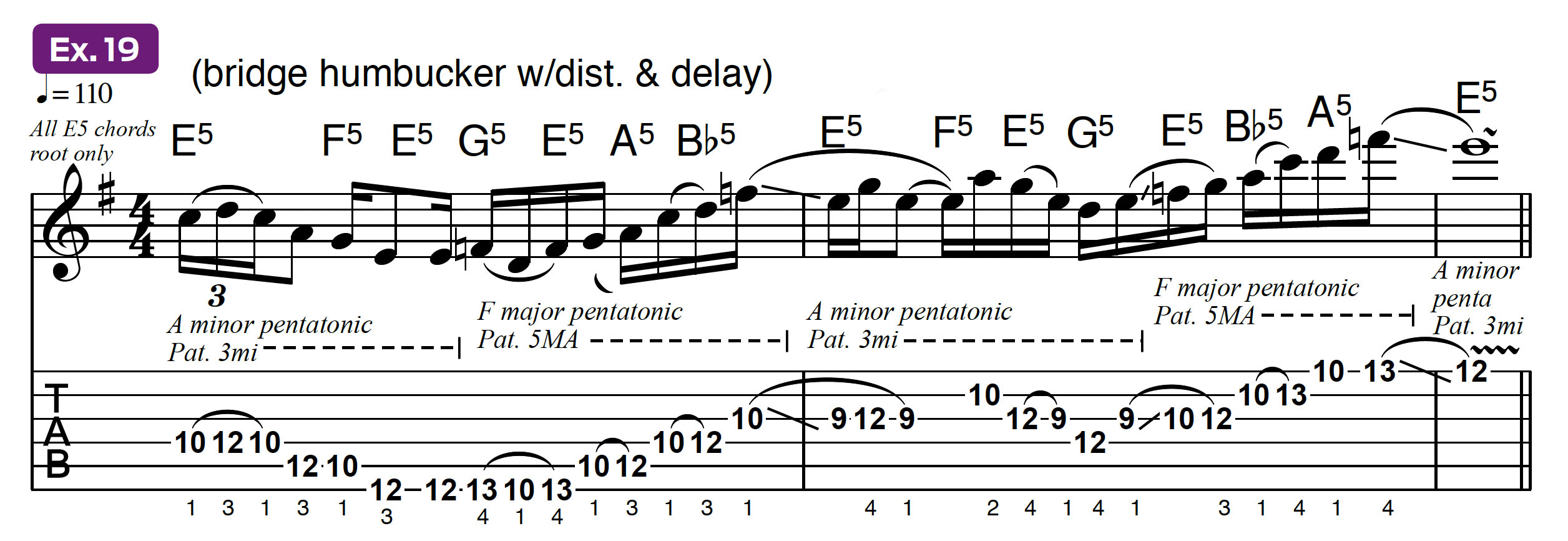
Last month, in Part 1 of this lesson, we looked at the interrelationships between pentatonic scales and the major and natural minor scales and saw how major and minor pentatonics can be repurposed and substituted over various tonal centers to create fresh-sounding melodic ideas that have a familiar feel under your fingers, due to the scale’s “open” structure and easily visualized fretboard shapes.
In this second and final installment, we’ll delve into some more appealing applications of this five-note scale and look at ways that it can be used in relative modal tonalities.
Modal Implications
It stands to reason that if specific pentatonic scales can be used to represent all the notes of a major and natural minor scale, then pentatonic patterns can be called on to outline popular modes such as Dorian, which is the second mode of the major scale and is intervallically spelled 1, 2, b3, 4, 5, 6, b7, and Mixolydian, which is the major scale’s 5th mode, spelled 1, 2, 3, 4, 5, 6, b7. Let’s tackle Dorian first.
Had Grateful Dead guitarist Jerry Garcia or the Doors’ Robbie Krieger been called to play on a Steely Dan session, the outcome may have sounded like Example 12.
Centered around a Gm chord, the progression is specifically G Dorian (G, A, Bb, C, D, E, F) by nature. The licks are designed from neighboring G minor pentatonic (G, Bb, C, D, F) and A minor pentatonic (A, C, D, E, G) scales.
Combined, the two scales represent all seven notes of G Dorian. Now imagine the more likely scenario of Larry Carlton on that same Steely Dan session (he played on many), and something similar to Example 13 may have been the result. Again, G and A minor pentatonic scales are applied but D minor pentatonic is added to the stew.
As a general rule, the minor pentatonic patterns based on the 1st, 2nd, and 5th scale degrees of the Dorian mode are perfect candidates for the pentatonic pairing approach.
All the latest guitar news, interviews, lessons, reviews, deals and more, direct to your inbox!
Let’s just go in order and hit Phrygian (the third mode of the major scale, intervallically spelled 1, b2, b3, 4, 5, b6, b7) next.
Example 14 is a fusion-style example (think Carlos Santana mind-melding with Al Di Meola) that’s played over a classic i-bII Phrygian vamp. The fiery lines employ neighboring pentatonic patterns based on the root and b7th of the mode.
The tonic position (E minor pentatonic) establishes the basic minor tonality while the b7th position (D minor pentatonic) brings out the signature b2 sound of the Phrygian mode.
Next in line is Lydian, the fourth mode of the major scale. Its scale structure (1, 2, 3, #4, 5, 6, 7) is so similar to the major scale’s that it is often used by jazz and fusion players as a substitute for Ionian (the modal name for the major scale), the only difference being that the 4th is raised, or “sharped,” in Lydian (#4).
The Lydian mode really comes to life in major progressions that incorporate a II (two major) chord, as in the big ’80s example in Example 15.
Here, D and G major pentatonic scales are strewn across the landscape for a distinctive G Lydian (G, A, B, C#, D, E, F#) outcome. This example secretly houses a rocker’s trick: To imply the Lydian mode, play the minor pentatonic scale a half-step below the root of the key.
From that viewpoint, F# minor pentatonic (same notes as the A major pentatonic scale) is doing the heavy lifting in bars 2 and 3.
We come next to the mighty Mixolydian mode (the fifth mode of the major scale, spelled 1, 2, 3, 4, 5, 6, b7). Mixolydian is a common occurrence in all styles of music because it aligns with the ubiquitous dominant 7th chord (1, 3, 5, b7).
This mode is so important that we’ll honor it with three examples in different styles, all based on the same pentatonic tradeoff maneuver.
Example 16 is an Zeppelin-esque, A Mixolydian (A, B, C#, D, E, F#, G) riff example exhibiting the rockabilly influences on Jimmy Page’s style. It is constructed using neighboring A and G major pentatonic patterns.
Example 17 is a Southern rock-flavored example, fashioned in the classic Allman Brothers Band/Dickey Betts style. Also in A Mixolydian, it uses the same neighboring patterns (an octave up the fretboard), and includes several slick position-shift slides.
Example 18 is a funky E Mixolydian (E, F#, G#, A, B, C#, D) passage crafted for hybrid picking (combination of pick and finger[s]). Based on sliding 6ths intervals (see Ex. 4), it carves a path across Patterns 5MA and 1MA of D and E major pentatonics. (The formula to remember for Mixolydian is to play major pentatonics from the root and b7th of the scale.)
Locrian (the seventh mode of the major scale, spelled 1, b2, b3, 4, b5, b6, b7) is the oddball mode of the bunch but can be used to great sinister effect in heavy metal and hard rock. (In case you think we’re skipping over Aeolian, the sixth mode of the major scale, we already covered it in Examples 3–9. As Ionian is the modal name for the major scale, Aeolian is the modal name for its relative minor, or “natural minor” scale.)
Example 19 features a flashy E Locrian (E, F, G, A, Bb, C, D) passage that crisscrosses A minor and F major pentatonic patterns over a power-chord progression that resembles a deranged reimagining of the “Peter Gunn” riff. For Locrian, the formula to remember is: minor pentatonic from the 4th degree, and major pentatonic from the b2nd.
Non-Diatonic Applications
Who’d have thought you could cast jazz phrases using pentatonic scales? Such is the case in the ii - V7 - I passage in Example 20.
Bars 1 and 2 disclose a chromatic approach used to great effect by jazz-rock fusion players like Larry Carlton and Scott Henderson. The ploy is to ascend chromatically using matching pentatonic patterns, in this case A minor pentatonic to Bb minor pentatonic (Bb, Db, Eb, F, Ab) to B minor pentatonic (B, D, E, F#, A).
A minor pentatonic represents a slice of the D Dorian mode (see Ex. 13); Bb minor pentatonic notes nail the altered-dominant iterations of the G7 chord – the b5, #5, b9, #9 – along with a “passing” major 7th; and B minor pentatonic casts a Lydian flavor over the Cmaj9 chord (see Ex. 15).
The second half of the example tucks an Ab minor pentatonic (Ab, Cb, Db, Eb, Gb) phrase between matching patterns of D minor and E minor pentatonics. The latter two are diatonic substitutions covered in previous examples. However, the Ab minor pentatonic notes hit the b9th, 3rd, b5th, #5th, and passing maj7th of the G7 chord.
Perhaps the most common usage of non-diatonic substitution is in dominant blues phrases that combine parallel (different modalities that share the same tonic note) major and minor pentatonic scales.
Example 21 provides one such example, played in the context of a classic ending phrase for a 12-bar blues in C. Here, overlapping scale patterns of C major pentatonic and C minor pentatonic are used for minor-to-major-3rd trade-offs (Eb to E), and balancing acts between major 6th (A) and b7th (Bb) note choices.
Example 22 puts a capper on this lesson with a slippery lick that superimposes a series of minor pentatonic scale notes via a chromatically ascending lick.
A solid blues-rock phrase establishes the key center (A minor) then a classic three-note lick is transformed up the fretboard in a series of half-step hand-offs, courtesy of a legato finger slide for each maneuver.
The target is Pattern 4mi of the A minor pentatonic scale at the 12th fret. The lesson to be learned from this example is “inside/outside” licks work best when bookended with consonant phrases that match the tonal center.
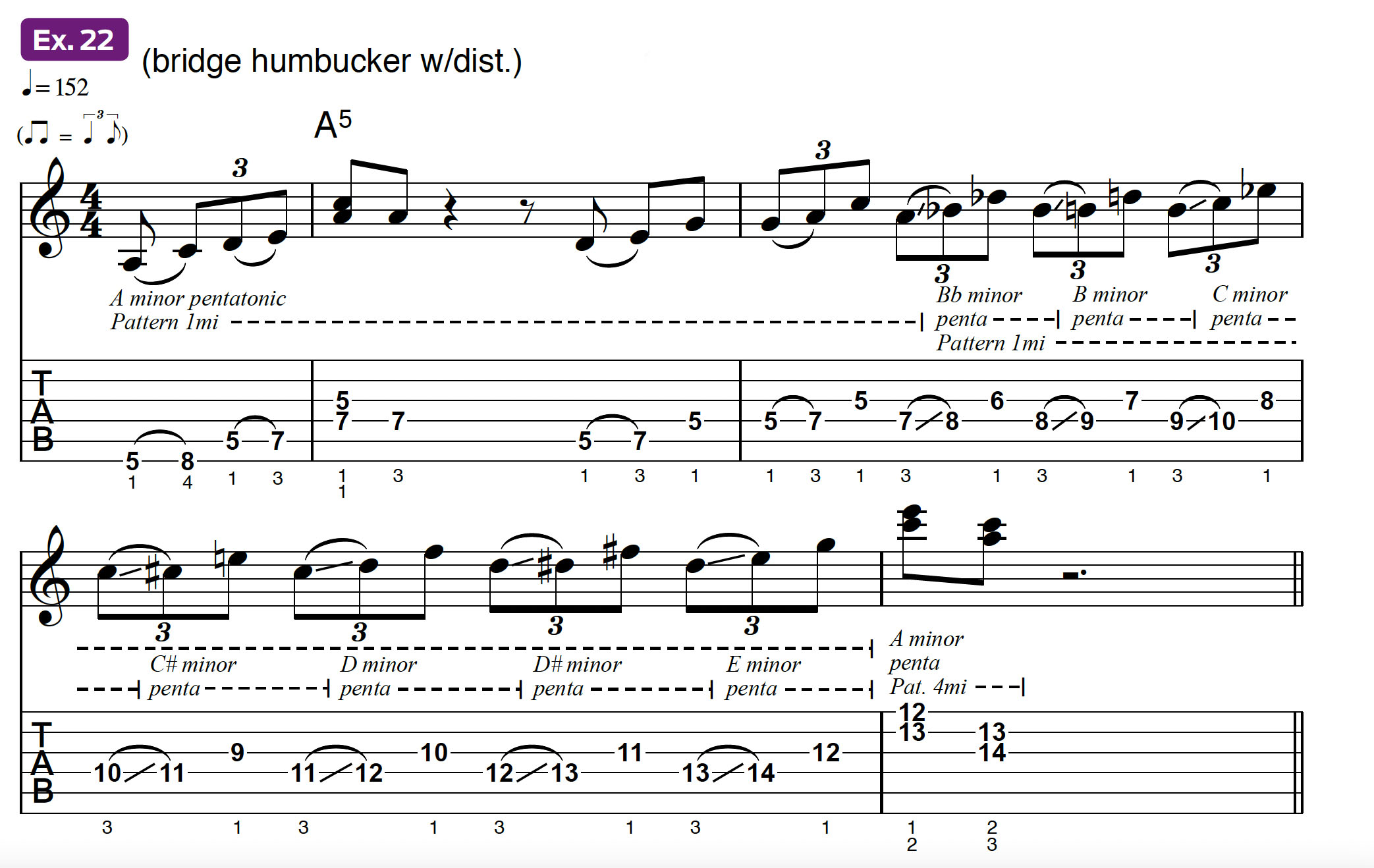
If you’re intrigued by this last example, here’s a good starting point to practice slipping in-and-out of tonality: Use the neighboring patterns explained in the Dorian examples (12 and 13), and pass between them using notes from a matching pattern of Ab minor pentatonic. It will probably seem weird to do this at first, but, used sparingly, this method can be very effective. Good luck!
